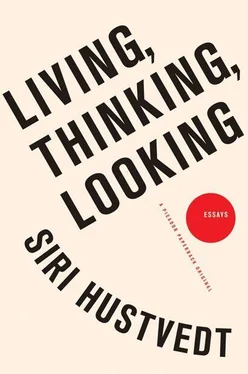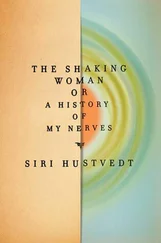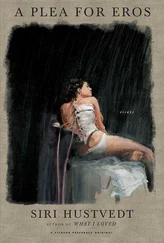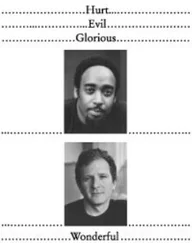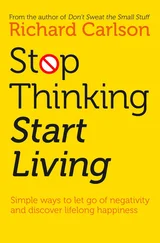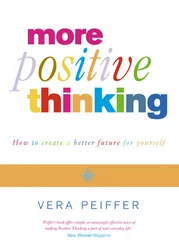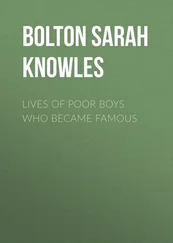14. Gregory A. Kimble, Michael Wertheimer, and Charlotte L. White, eds., Portraits of Pioneers in Psychology (Hillsdale, NJ: Lawrence Erlbaum, 1998), 3:75.
15. D. Hassabis, D. Kumaran, S. D. Vann, and E. Maguire, “Patients with Hippocampal Lesions Cannot Imagine New Experiences,” Proceedings of the National Academy of Sciences 104 (2007): 1726–31; D. Hassabis, S. D. Kumaran, and E. Maguire, “Using Imagination to Understand the Neural Basis of Episodic Memory,” The Journal of Neuroscience 27, no. 52 (2007): 14365–74.
16. Dorothée Legrand and Perrine Ruby, “What Is Self-Specific?: Theoretical Investigations and Critical Review of Neuroimaging,” Psychological Review 116, no. 1 (2009): 258.
17. F. Frassinetti, F. Ferri, M. Maini, and V. Gallese, “Bodily Self: An Implicit Knowledge of What Is Explicitly Unknown,” Experimental Brain Research, 12 (2011): 159.
18. Shaun Gallagher, How the Body Shapes the Mind (Oxford: Oxford University Press, 2005), 24.
19. Ibid., 11–12.
20. William James, The Principles of Psychology (Chicago: Encyclopaedia Britannica, 1952), 299.
21. The Standard Edition of the Complete Works of Sigmund Freud , ed. and trans. James Strachey, vol. 4–5 (1900), The Interpretation of Dreams (London: Hogarth Press, 1953), 460.
22. Marcel Proust, Remembrance of Things Past , trans. S. Moncreif and T. Kilmartin (New York: Vintage, 1982), 1:48.
23. Quoted in Dan Zahavi, Subjectivity and Selfhood (Cambridge, MA: MIT Press, 2008), 57.
24. Joseph Jaffe, Beatrice Beebe, Stanley Feldstein, Cynthia Crown, and Michael Jasnow, Rhythms of Dialogue in Infancy (Boston, MA: Blackwell, 2001), 2.
25. Jaak Panksepp, Affective Neuroscience: The Foundations of Human and Animal Emotions (Oxford: Oxford University Press, 1998), 55.
26. Zahavi, Subjectivity and Selfhood, 112.
27. Jaak Panksepp, “Neural Nature of the Core SELF: Implications for Understanding Schizophrenia,” in The Self in Neuroscience and Psychiatry , ed. T. Kircher and A. David (Cambridge: Cambridge University Press, 2003), 204.
28. Antonio Damasio, Self Comes to Mind: Constructing the Conscious Brain (New York: Pantheon, 2010), 21.
29. Freud, The Standard Edition, vol. 14 (1915), Instincts and Their Vicissitudes , 118.
30. Gallagher, How the Body Shapes the Mind, 78–79.
31. A. N. Meltzoff and R. Brooks, “Intersubjectivity Before Language: Three Windows on Preverbal Sharing,” in On Being Moved: From Mirror Neurons to Empathy , ed. S. Braten (Amsterdam: John Benjamins, 2007), 150.
32. L. S. Vygotsky, Thought and Language , trans. A. Kosulin (Cambridge, MA: MIT Press, 1986), 84–89.
33. Katherine Nelson, ed., Narratives from the Crib (Cambridge MA: Harvard University Press, 1989), 158.
34. Ibid., 163.
35. Françoise Davoine and Jean-Max Gaudillière, History Beyond Trauma, trans. S. Fairfield (New York: Other Press, 2004).
36. Quoted in D. Brown, A. W. Sheflin, and D. C. Hammond, eds., Memory, Trauma, Treatment, and the Law (New York: Norton, 1998), 94.
37. Freud, The Standard Edition , vol. 18 (1920), Beyond the Pleasure Principle , 31–32.
38. Brewster Ghiselin, The Creative Process: Reflections in the Arts and Sciences (Berkeley, CA: University of California Press, 1952), 32.
39. Ibid., 28.
40. Bruner, Actual Minds , 3.
41. Edward F. Kelly and Emily Williams Kelly, Irreducible Mind: Toward a Psychology for the 21st Century (with CD of F. W. H. Myers, Human Personality, 1903) (Lanham, MD: Rowman and Littlefield, 2007), 445.
42. Ernst Bertram and R. E. Norton, Nietzsche: Attempt at a Mythology (Champaign: University of Illinois Press, 2009), 198.
43. F. W. H. Myers, Human Personality and Its Survival of Bodily Death (London: Longmans, Green, 1903).
44. R. Jung, C. Gasparovic, R. S. Chaves, R. A. Flores, S. M. Smith, A. Caprihan, et al., “Biochemical Support for the Threshold Theory of Creativity,” Journal of Neuroscience 29, no. 16 (2009): 5319; R. Jung, J. M. Segal, H. J. Bockholt, R. A. Flores, S. M. Smith, R. S. Chavez, et al., “Neuroanatomy of Creativity,” Human Brain Mapping 31, no. 3 (2010): 398; C. R. Aldous, “Creativity, Problem Solving and Innovation in Science: Insights from History, Cognitive Psychology and Neuroscience,” International Education Journal 8, no. 2 (2007): 177.
Freud’s Playground
1. The Standard Edition of the Complete Works of Sigmund Freud, ed. and trans. James Strachey, vol. 12 (1914), Remembering, Repeating, and Working Through (London: Hogarth Press, 1958), 154.
2. Anna Freud, The Ego and Mechanisms of Defense (London: Karnac, 1995).
3. Sigmund Freud, The Standard Edition, vol. 22 (1932–33), New Introductory Lectures on Psychoanalysis , 95.
4. Sigmund Freud, The Standard Edition, vol. 21 (1930), Civilization and Its Discontents , 117.
5. Sigmund Freud, New Introductory Lectures, 95–97.
6. Jaak Panksepp, Affective Neuroscience (Oxford: Oxford University Press, 1998), 262.
7. Sigmund Freud, New Introductory Lectures , 97.
8. Sigmund Freud, The Standard Edition , vol. 2 (1893–1895), Studies on Hysteria , 302.
9. Sigmund Freud, The Standard Edition , vol. 7 (1905), Fragment of an Analysis of a Case of Hysteria , 116.
10. Sigmund Freud, Remembering, Repeating, 154. Transference as an “artifical illness” borrows directly from Jean Martin Charcot’s notion that while under hypnosis, hysterical patients reproduced their symptoms in “artificial” hysteria.
11. The Freud/Jung Letters: The Correspondence Between Sigmund Freud and C. G. Jung , ed. William McGuire (Princeton: Princeton University Press, 1974), 12–13.
12. The Clinical Diary of Sándor Ferenczi, ed. Judith Dupont, trans. Michael Balint and Nicola Zarday Jackson (Cambridge, MA: Harvard University Press, 1985).
13. Sigmund Freud, The Standard Edition , vol. 4–5 (1900), The Interpretation of Dreams , 460.
14. D. W. Winnicott, “Transitional Objects and Transitional Phenomena — A Study in the First Not-Me Possessions,” International Journal of Psychoanalysis 34 (1953): 90.
15. D. W. Winnicott, “Playing: A Theoretical Statement,” in Playing and Reality (London: Routledge, 1971), 51.
16. Ibid., 51.
17. Johan Huizinga, Homo Ludens: A Study of the Play Element in Culture (Boston: The Beacon Press, 1950), 11.
18. L. S. Vygotsky, “The Role of Play in Development,” in Mind in Society: The Development of Higher Psychological Processes, ed. Michael Cole, Vera John-Steiner, Sylvia Scribner, and Ellen Souberman (Cambridge, MA: Harvard University Press, 1978), 99.
19. Martin Buber, Between Man and Man (London: Routledge, 1965), 6.
20. Friedrich Schiller, On the Aesthetic Education of Man, trans. Reginald Snell (Mineola, NY: Dover, 2004), 77–81.
21. Sigmund Freud, The Standard Edition, vol. 7 (1905), Three Essays on the Theory of Sexuality , 168.
22. Sigmund Freud, The Standard Edition, vol. 20 (1926), Inhibitions, Symptoms, and Anxiety, 133.
23. V. Gallese, L. Fadiga, L. Fogassi, and G. Rizzolatti, “Action Recognition in the Premotor Cortex,” Brain 119 (1996): 593–609.
24. William Preyer, The Mind of the Child / The Senses and the Will: Observations Concerning the Development of the Human Being in the First Years of Life, trans. H. W. Brown (New York: Appleton, 1905).
Читать дальше
